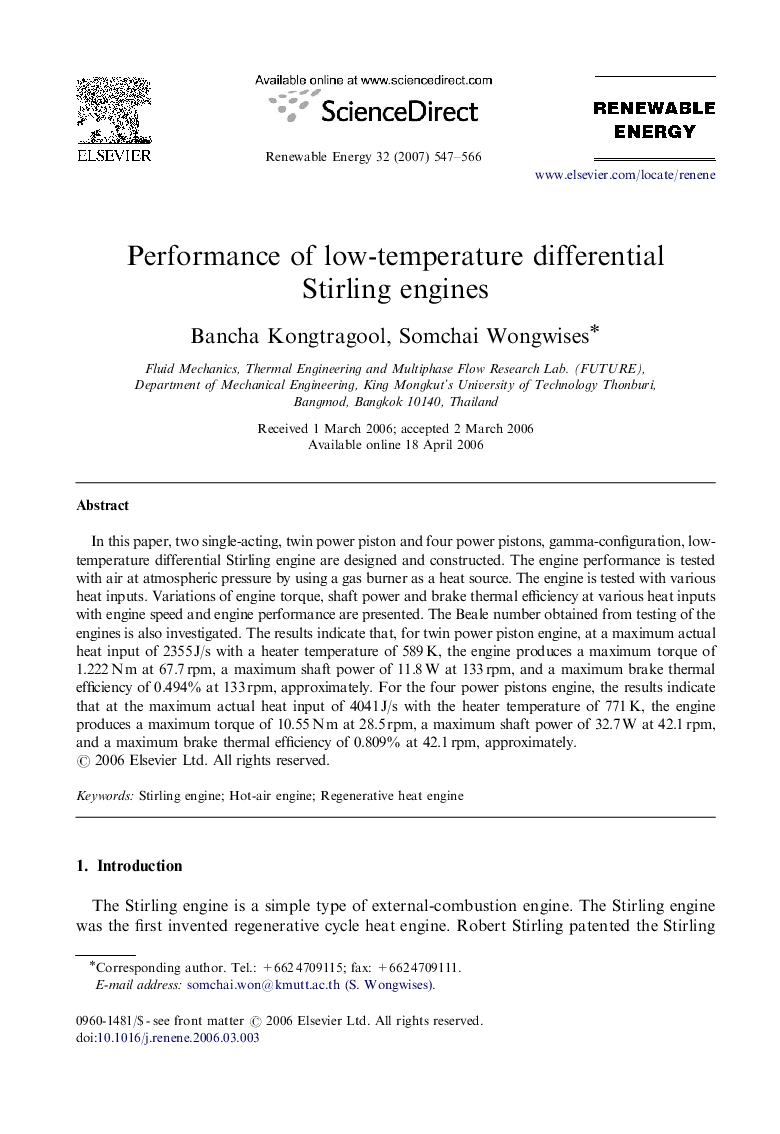| Article ID | Journal | Published Year | Pages | File Type |
|---|---|---|---|---|
| 302881 | Renewable Energy | 2007 | 20 Pages |
In this paper, two single-acting, twin power piston and four power pistons, gamma-configuration, low-temperature differential Stirling engine are designed and constructed. The engine performance is tested with air at atmospheric pressure by using a gas burner as a heat source. The engine is tested with various heat inputs. Variations of engine torque, shaft power and brake thermal efficiency at various heat inputs with engine speed and engine performance are presented. The Beale number obtained from testing of the engines is also investigated. The results indicate that, for twin power piston engine, at a maximum actual heat input of 2355 J/s with a heater temperature of 589 K, the engine produces a maximum torque of 1.222 N m at 67.7 rpm, a maximum shaft power of 11.8 W at 133 rpm, and a maximum brake thermal efficiency of 0.494% at 133 rpm, approximately. For the four power pistons engine, the results indicate that at the maximum actual heat input of 4041 J/s with the heater temperature of 771 K, the engine produces a maximum torque of 10.55 N m at 28.5 rpm, a maximum shaft power of 32.7 W at 42.1 rpm, and a maximum brake thermal efficiency of 0.809% at 42.1 rpm, approximately.
